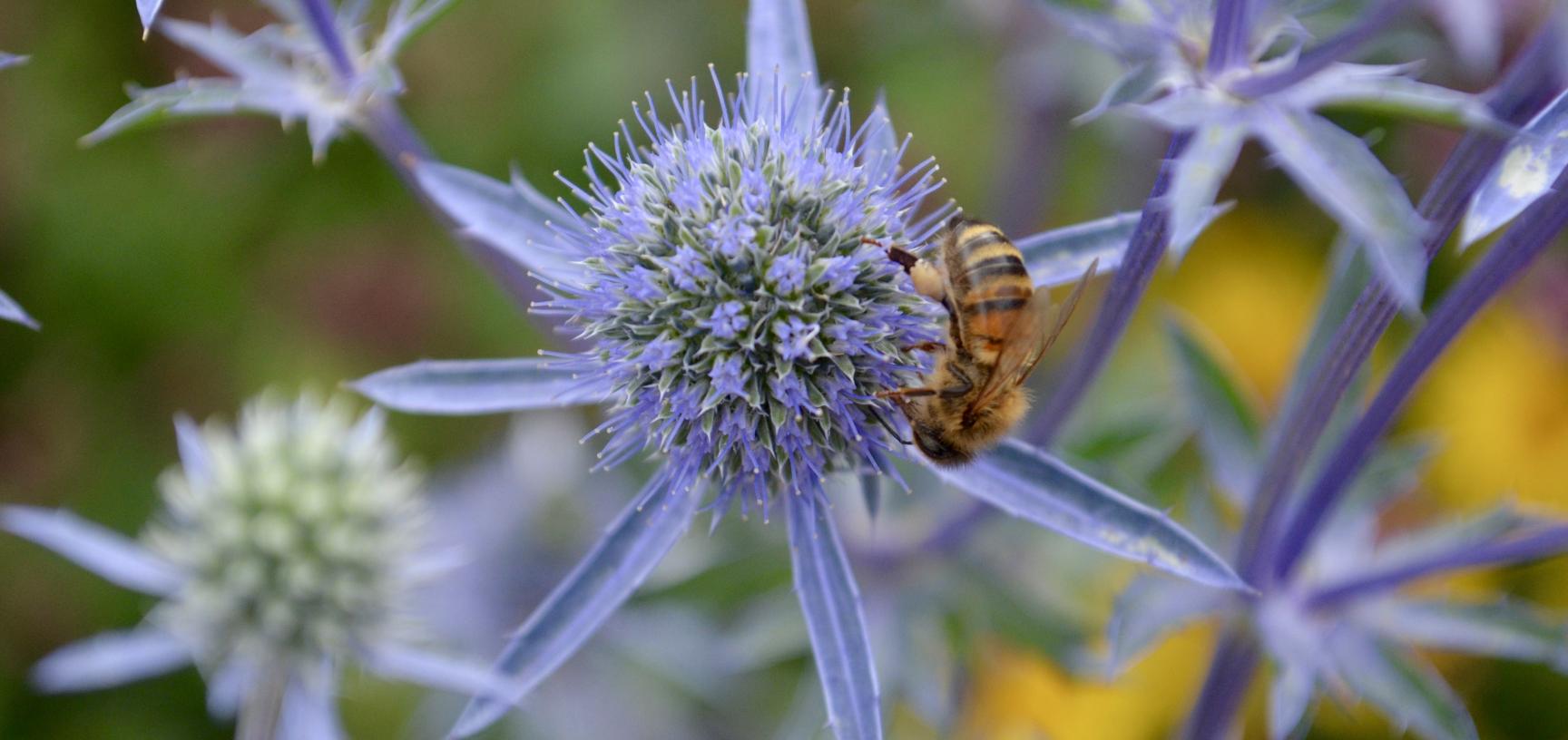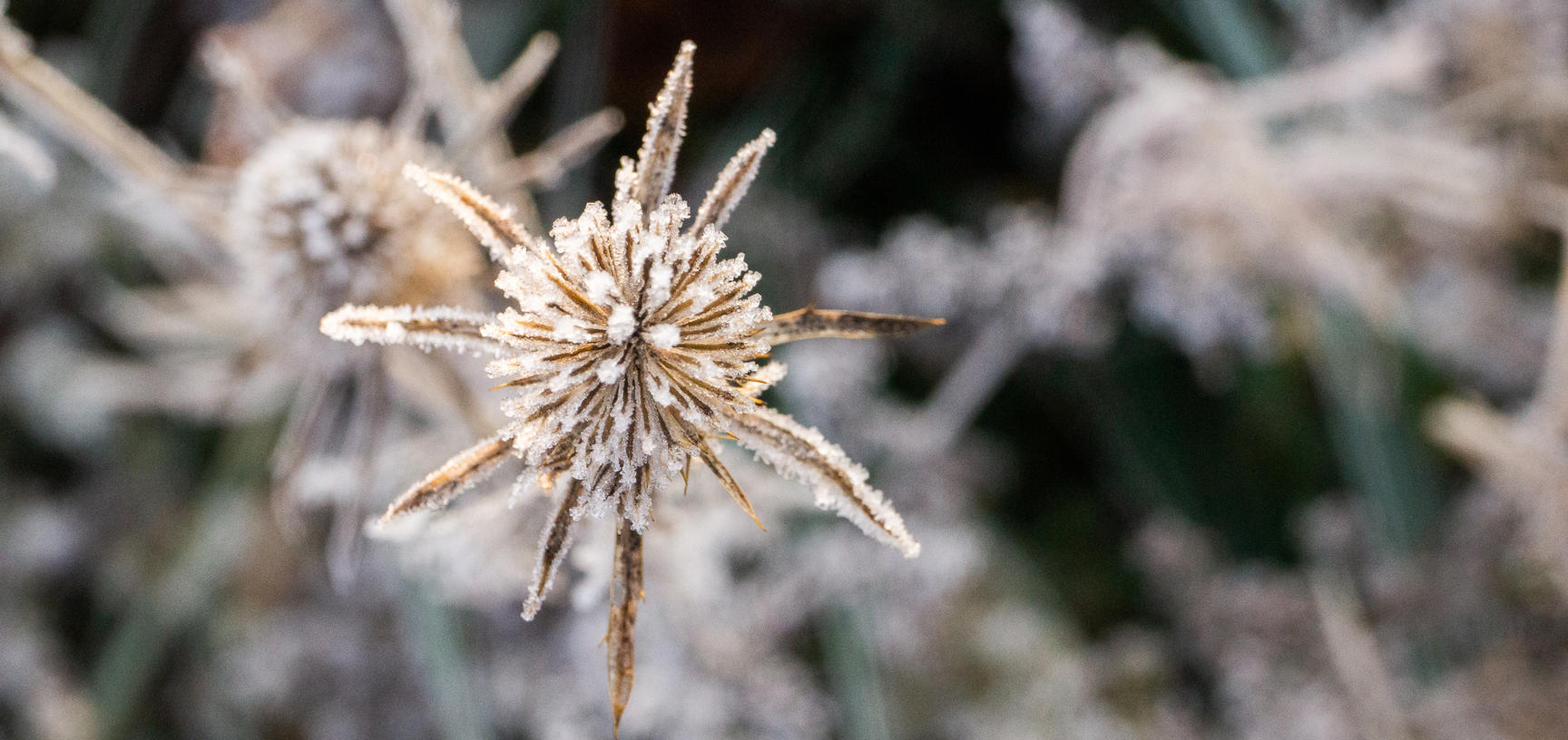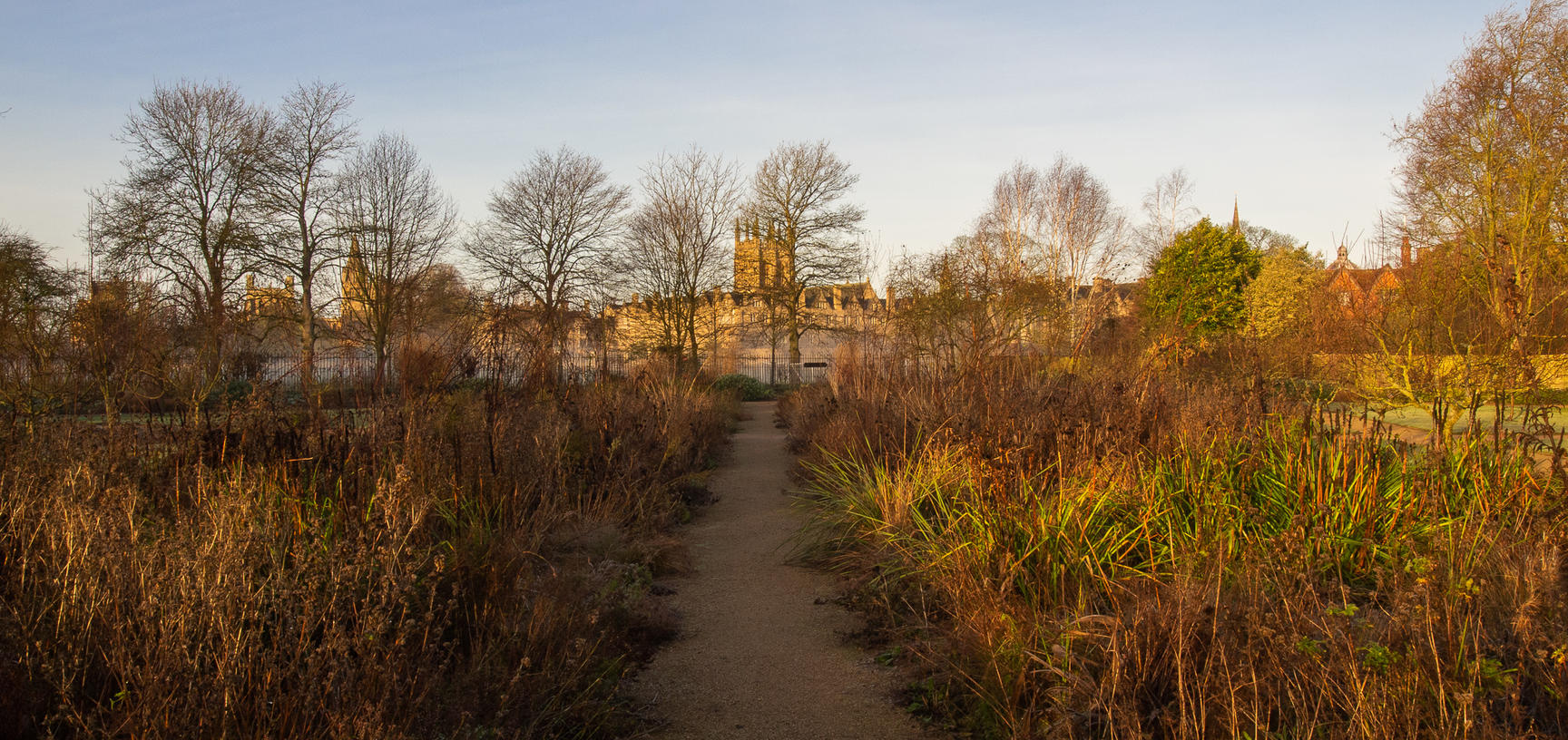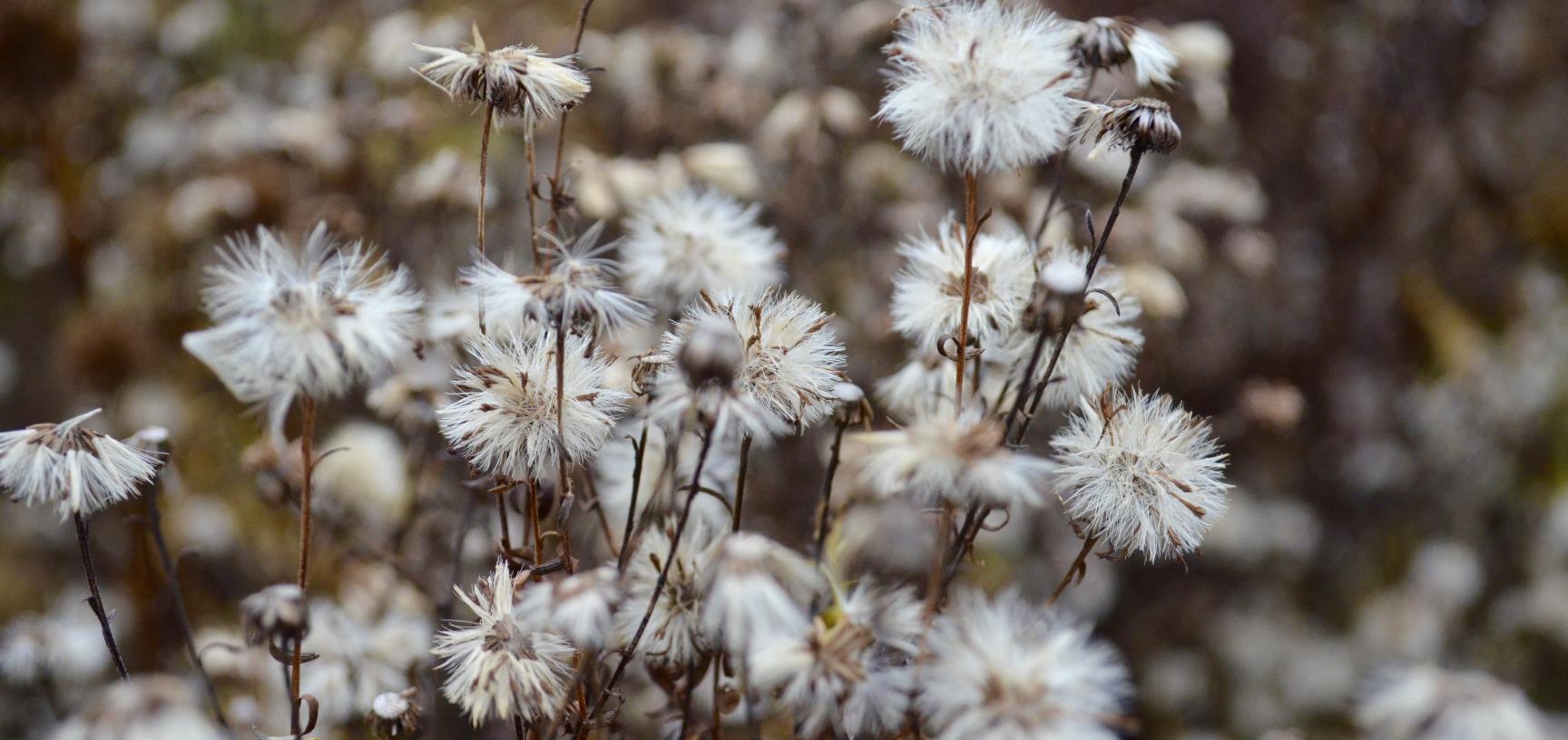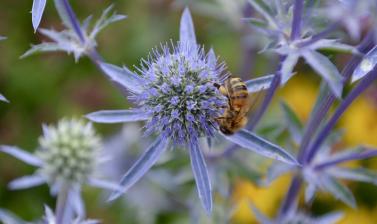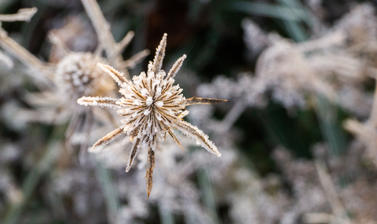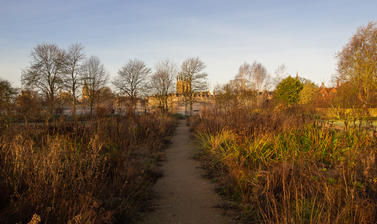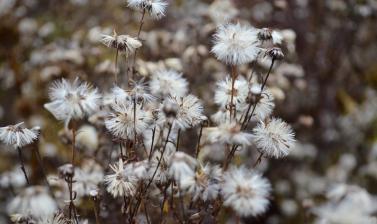The Merton Borders
The Garden worked in collaboration with Professor James Hitchmough from the Department of Landscape Architecture at the University of Sheffield to develop the sustainable Merton Borders. The borders occupy an area of 955m2, and are an example of sustainable horticultural development, with the aim of having minimal impact on the environment in the long term.
The planting is based on an ecological study of natural plant communities to produce an ornamental yet sustainable display. 85% of the plants were established through the direct sowing of seed. This has two benefits: firstly, it is more sustainable than planting thousands of plants grown in peat-based composts and plastic containers. Secondly, sowing from seed makes it possible to establish plants at much higher densities. This increases the diversity of the plantings, and ensures a long succession of flowering through the season.
The plants have been selected for their ability to withstand drought conditions and originate from seasonally dry grassland communities in three regions of the world:
- The Central to Southern Great Plains (USA) through to the Colorado Plateau and into California
- East South Africa at altitudes above 1000m
- Southern Europe to Turkey, and across Asia to Siberia
Selecting plant species from these drier plant communities will build in a greater tolerance of warmer, drier summers.
The planting is colourful from spring to autumn, and represents a dynamic style of planting. It is also drought-tolerant, requiring no artificial irrigation, staking or fertilisers. It is allowed to die back over a long period after the autumn, providing a rich habitat for many types of small birds and mammals.




